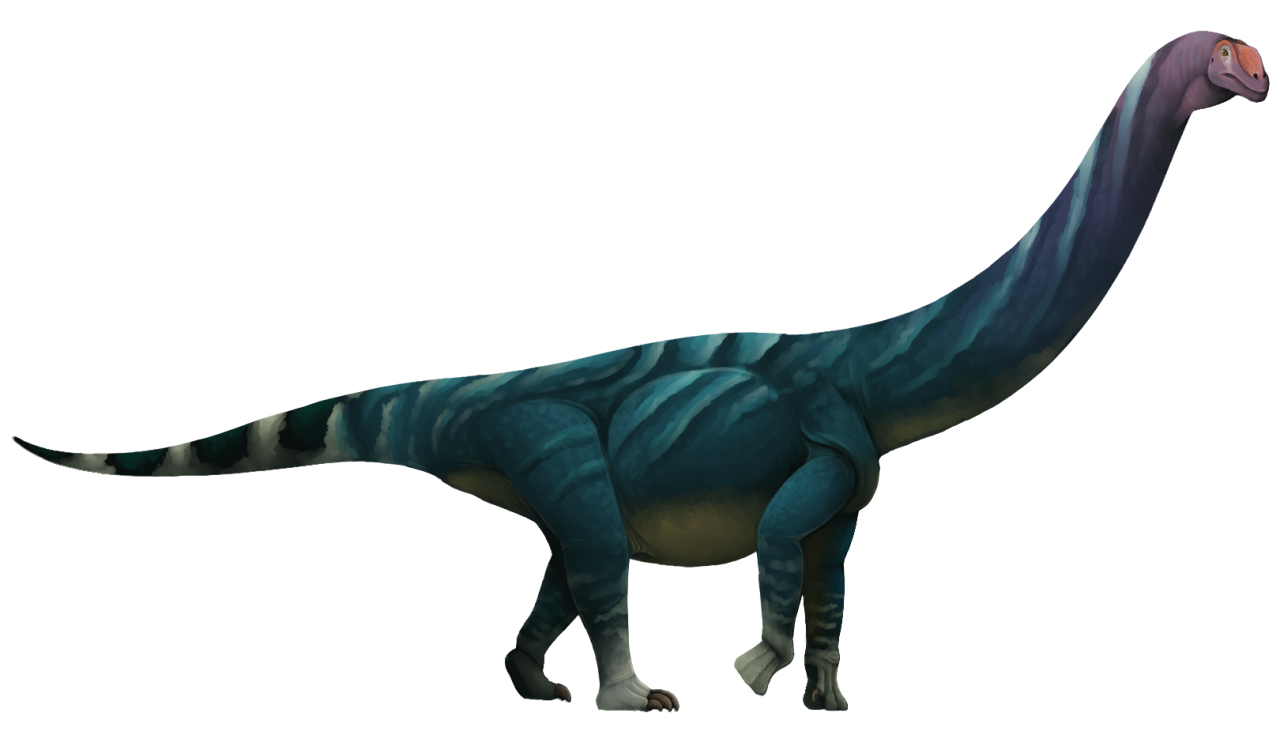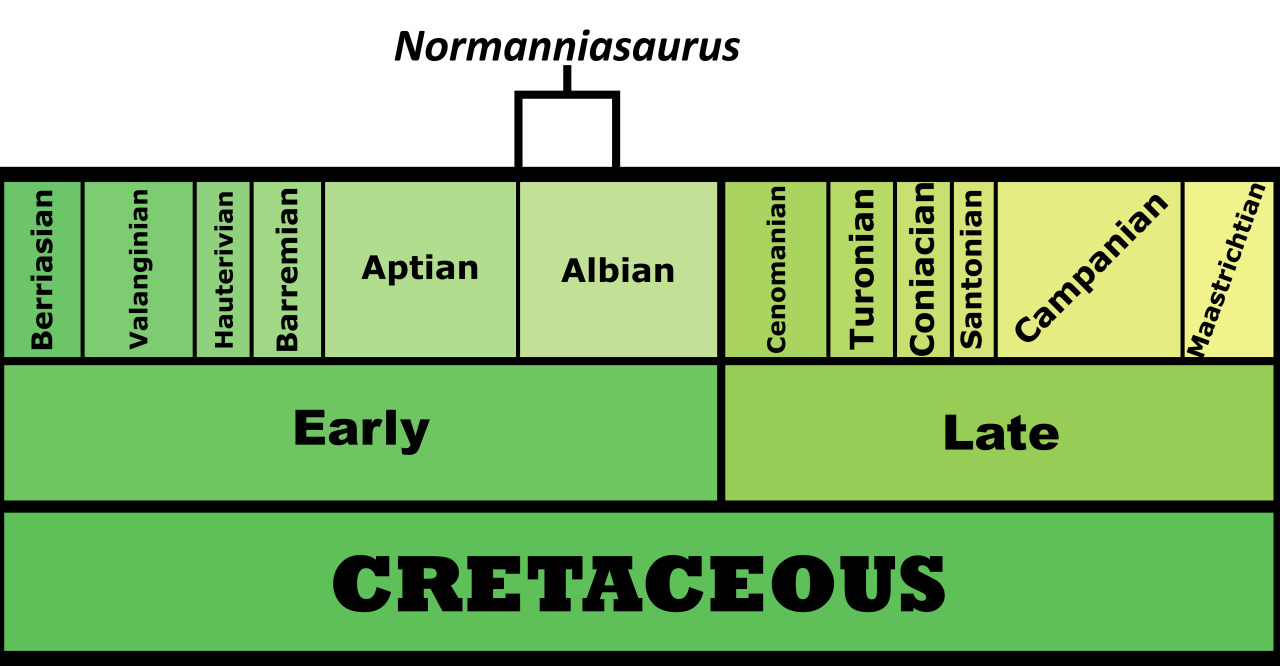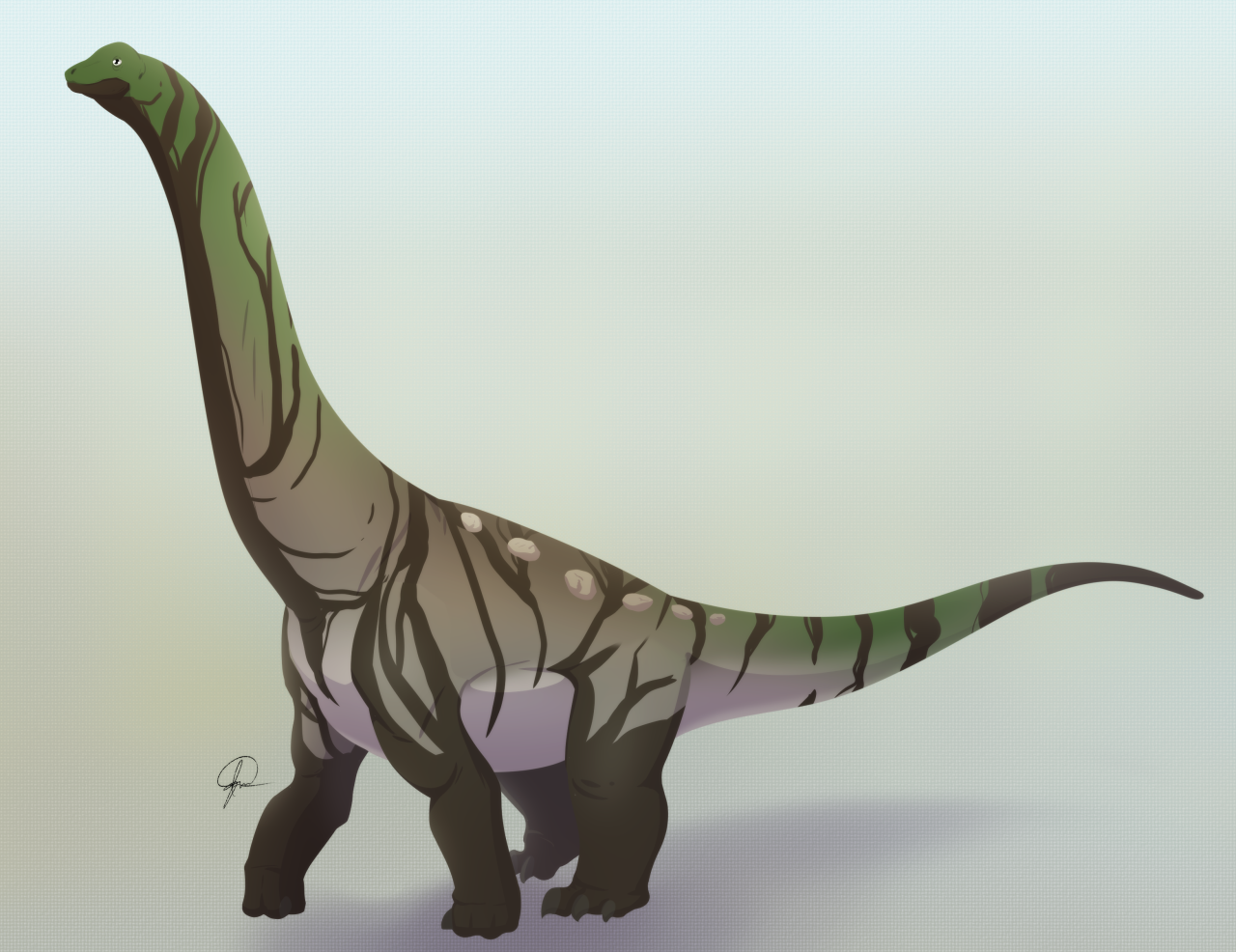
By Scott Reid
Etymology: Reptile from Normannia
First Described By: Le Loeuff et al., 2013
Classification: Dinosauromorpha, Dinosauriformes, Dracohors, Dinosauria, Saurischia, Eusaurischia, Sauropodomorpha, Bagualosauria, Plateosauria, Massopoda, Sauropodiformes, Anchisauria, Sauropoda, Gravisauria, Eusauropoda, Neosauropoda, Macronaria, Titanosauriformes, Somphospondyli, Titanosauria
Status: Extinct
Time and Place: Between 113 and 107 million years ago, in the Albian age of the Early Cretaceous


Normanniasaurus is known from the Poudingue Ferrugineux Formation of northwestern France

Physical Description: Normanniasaurus was a fairly early titanosaur, the group of Cretaceous period sauropods that make up the greatest diversity of the group. Normanniasaurus itself was a small to medium sized sauropod, probably around 12 meters long. It was interesting in a few ways – notably, it had the ball-and-socket connections between vertebrae, like later titanosaurs, but only at the base of the tail. This would make the tail fairly flexible compared to non-titanosaur sauropods, but not as flexible as later forms. Unlike later titanosaurs, however, it had a very stiff back – more like more basal, non-titanosaur sauropods. The spines of Normanniasaurus also had huge connected holes on the tail. In all, Normanniasaurus showcases a mixture of basal and derived sauropod traits, indicative of its early position in titanosaur evolution.
Diet: As a smaller titanosaur, Normanniasaurus was probably a mid-level browser, though it’s possible it could reach higher levels of vegetation when needed.

By José Carlos Cortés
Behavior: Being still small-ish in size, Normanniasaurus would have probably been more skittish than larger titanosaurs, needing to react quickly in the presence of potential danger, as it couldn’t rely on large size for it (given the presence of larger predators in its area, which is uncertain). It spent most of its day grazing on food, storing it all in a large stomach. As only a few fossils of Normanniasaurus have been found, it’s difficult to tell if it lived in herds, but it seems somewhat likely given its smaller size and need to protect itself. It is unknown whether or not it would have cared for its young.
Ecosystem: The Poudingue Ferrugineux Formation formed along a coastal environment, meaning Normanniasaurus would have interacted with the ocean ecosystem moreso than more inland animals. However, no other dinosaurs have been found from this formation, much less other fossils, so it’s difficult to tell what would have been the predators of Normanniasaurus specifically, or competitors, or just what it would have interacted with at all. There do seem to be other titanosaurs from the general time and place, including Aepisaurus and Macrurosaurus, implying that Normanniasaurus might have been one member of a fairly diverse sauropod-heavy ecosystem.
Other: Normanniasaurus is one of the earliest known titanosaurs, though it’s precise placement in the group is murky. It might be the oldest known Aelosaur, which would also make it the only member of that group known from Europe. Alternatively, it might be more like Malawisaurus, which lived at the same time, but in Africa. If its a basal titanosaur, it’s fairly typical for the group; but if it is an Aeolosaur, it might have lost some titanosaur traits, which would make it a fascinating case in titanosaur evolution.
~ By Meig Dickson
Sources
Buffetaut, E. 1984. Une vertèbre de dinosaurien sauropode dans le Crétacé du Cap de la Hève (Normandie). Actes du Muséum d’Histoire naturelle de Rouen 7: 215 – 221.
Le Loeuff, J., S. Suteethorn, E. Buffetaut. 2013. A new sauropod dinosaur from the Albian of Le Havre (Normandy, France). Oryctos 10: 23 – 30.
